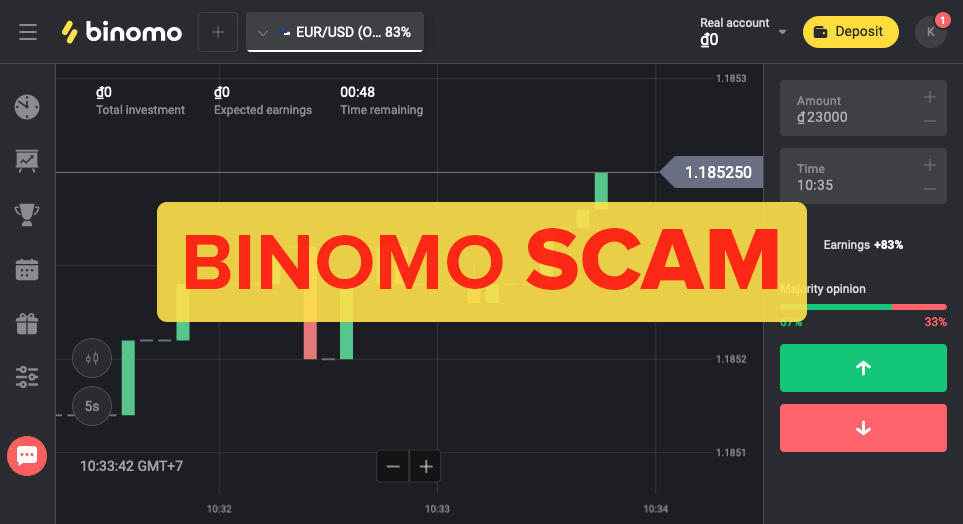Understanding the nature of an activity always makes it easier for you to do it, no matter how complicated it is. This is the case with fundamental analysis. Although this can be done through different operations, its essence is quite simple, and we will cover it in this article.
Focuses on Fundamentals
Forget about charts and prices for a moment. Take a look at what they represent. They represent economies, companies, people, things produced, bought and sold, currencies, transferred and traveled around the world in different currencies. All this and much more is a real process. They exist side by side and overlap. That’s what’s most basic, that’s what makes it called “Fundamentals”.
More specifically, fundamental analysis looks at a trading asset as a product of a particular company or economy and looks at how well you understand that company or economy is doing. anyway, are they basically doing well or badly?
If the company or the economy that represents the asset is showing good momentum, the asset for it also holds great potential.
Register Olymp Trade & Get Free $10,000 Get $10,000 free for newbies
If the company or the economy is contracting, the trading asset that represents it will also tend to fall, even below the market average, and present dire prospects.
Once you answer the question posed by fundamental analysis and arrive at one of the two conclusions summarized above, you can make a trading decision based on that.
What is Fundamental Analysis in Currencies?
Every country or economic union has its own currency. USA has USD, Europe has EUR, UK has GBP, Japan has JPY and so on.
Usually, if a country or economic region is growing and has a positive outlook without major threats, that country’s currency will appreciate.
If a country or an economic region is in recession, experiencing or experiencing problems such as public debt, that country’s currency will lose value and depreciate.
When trading currency pairs, the price performance of each currency pair is a result of how strongly one currency is valued against the other.
For example, if on a certain day that has been predicted in advance, there is bad news affecting the JPY and there is no major news for USD, then the JPY is likely to depreciate against the USD. Therefore, USD/JPY will rise.
If on another day there is positive news for GBP and some bad news for EUR, EUR/GBP is likely to go down.
Here is a list of the most impactful news for currency pairs:
- Interest rate changes and Monetary Reports released by the central banking authorities
- Strategic statements made by the heads of states
- Employment dynamics shared by labor authorities
- Inflation and consumer price dynamics
- Quarterly and yearly GDP growth rates
And many other news depending on your opinion. Most of the impactful news is presented in Olymp Trade’s Insights with expert forecasts on price direction.

What is Fundamental Analysis in the Stock Market?
Fundamental analysis of a stock is the act of looking at the business of the company that a stock represents. Specifically, it assesses whether the business is generating healthy profits and whether it offers promising future prospects.
Register Olymp Trade & Get Free $10,000 Get $10,000 free for newbies
Among the many fundamental approaches to stock valuation, comparative analysis and stock business evaluation approaches stand out. These are two methods of stock evaluation that help decide if a particular stock deserves to be included in your portfolio. Consider these two methods.
Comparative analysis using financial ratios
This type of stock fundamental analysis is often applied to compare stocks of the same market sector such as the oil and gas, pharmaceutical, or transportation industries.
Comparative analysis based on various metrics and ratios. Of these, P/E, P/S, P/B and D/P are the easiest to use.
Remember, the lower the P/E, P/S, and P/B ratios, the better the stock is considered.
The higher the D/P, the better the business is evaluated according to this approach.
P/E is the company’s price, or market capitalization, divided by its earnings. Therefore, it is basically the payback period of the business. For example, if we buy a company for $100 million that generates an annual profit of $10 million, it will take 10 years for our investment to pay off. The earlier that time, the fewer and better the cycle.
P/B divides the company market cap, or its current price, by its book value, or its own capital as per the balance sheet. For example, if we buy a $100mln company that owns several factories with the total value of $100mln, the P/B will be $100mln/$100mln=1. In this case, we would know that what we pay to buy this business is its real value. The lower the P/B, the better for the purchaser of the business.
P/S is the company price divided by its sales. Most often, growing sales usually mean strong business dynamics for a company. In the meantime, the lower this ratio, the better it is for the purchaser of the stock.
Register Olymp Trade & Get Free $10,000 Get $10,000 free for newbies
D/P is a ratio that assesses the company dividend profitability. If we buy a business for $100mln, and it pays a yearly $50mln in dividends, its dividend profitability is 50%. That would mean that one year of owning this business would bring a 50% return on our investment and 2 years would pay us back entirely.
Evaluation the Company as a Business
The evaluation of a company through related stocks is based on a variety of financial metrics, such as total assets and liabilities, capital, earnings, net income, dividend policy.
In general, all stocks can be divided into growth stocks and value stocks.
As corporations grow, they often lead to positive earnings growth, but may not pay dividends.
The earnings of value holding companies may not necessarily increase, but the advantage is that these companies pay dividends on a regular basis.
Choosing a company with low total liabilities is the most optimal for investors. Here is a useful formula for that.
Company assets = Total liabilities – Equity
Divide the total liabilities by the assets of the company, we get the required ratio. In general, the lower it is, the better. Meanwhile, each industry has its threshold values. For example, it is normal for banks to have high total liabilities. In other market sectors, total liabilities amounting to 70-75% of a company’s assets is an alarming sign.
A growing company must generate ever-increasing sales. An annual sales growth of more than 15-20% is considered optimal for such stocks. Logically, if sales do not increase or decrease, then buying the stock cannot be recommended.
Now, growth stocks aren’t seeing their sales grow as aggressively as they used to. Its annual sales growth value is typically in the 5-10% range and is considered a good stock to buy.
Net profit is also expected to increase with growth holdings. This is an important metric because a company may have high revenues, but due to high wages, expensive resource use, or poor investment, the company may have low, zero or even net profit. minus. Therefore, if the company’s net profit is not growing, that is a bad sign.
Register Olymp Trade & Get Free $10,000 Get $10,000 free for newbies
Dividend policy is another important indicator. If a company consistently pays high dividends year after year, that can be a good sign. At the same time, it may mean that the company does not find the ability to invest and expand strategically. So while “dividend companies” pay good dividends, they often don’t grow. Usually the stock prices of such companies fluctuate within a certain range.
Summarizing Stock Fundamental Analysis
Now, we come to a general summary of how fundamental stock analysis works. In general, if a company’s business is expanding, its sales are increasing, and no major fluctuations are expected, then the company’s stock should rise.
If a company is experiencing problems, sales are not growing, the business outlook is uncertain, or is experiencing legal problems, that company’s stock depreciates and goes down.
Here is a list of most impactful news for stocks:
- Quarterly earnings reports released during earnings seasons
- Major changes in the company operations, strategic vision, and other news
- Changes of CEO and other senior executives
- Mergers and acquisitions
- Competition from other companies
- Similar to currency pairs, Olymp Trade’s Insights covers the stock news as well, providing you with fundamental analysis and signals to follow.
In the same way, fundamental analysis works in all other areas of the market.
To understand what awaits a trading instrument, fundamental analysis recommends thinking carefully and not just using charts.
Keep Exploring
Fundamental analysis is based on knowledge. It doesn’t have to be extensive, but it should be perfect and practical. Traderrr articles are filled with useful information. In addition, there are specific sections dedicated to getting started with fundamental analysis for both beginners and advanced traders alike.




